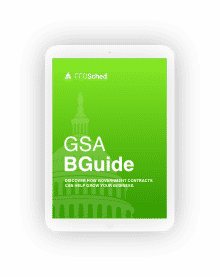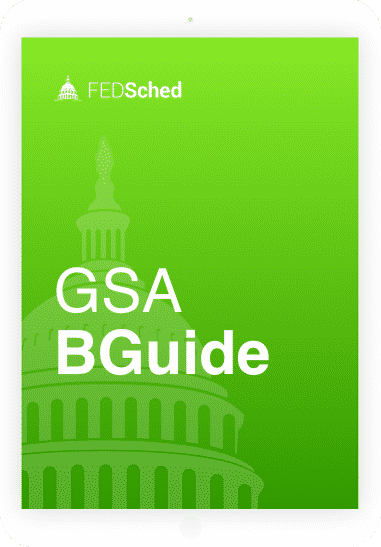With federal contract awards nearing $590 billion in fiscal year 2019, companies look at crossing into the government market every day. While there are business practices that can be applied across multiple market segments, the government market has nuances that require a specialized approach. If your company is new to the federal market, the Small Business Administration (SBA) has a helpful guide with the information you need to get started: SBA Contracting Guide.
Federal Market Research
Market research should be the first step in your plan to sell to the government. Utilize the online resources listed below to determine if there is a demand for what you offer in the government space. One of the benefits of targeting the government market is the public availability of data on federal contract awards.
- USASpending.gov for overall government spending
- Federal Procurement Data System (FPDS) for detailed, specific breakdowns of federal spending
- Schedule Sales Query Plus for sales specific to the GSA Schedules & GSA Schedule Contractors
- GSA eLibrary for information on products/services offered through the GSA Schedules and Contractors who hold GSA Schedules
Who is your ideal buyer? What are they currently purchasing? How are they procuring these items (what contract vehicles are they using) and who are they buying them from? Use the tools listed above to answer these questions and to profile agencies that are most likely to have an interest in your products/services, as well as contractors that are currently providing these products/services.
The Federal Acquisition Jumpstation also serves as a resource for finding out how specific agencies procure products and services. This site provides a list of procurement related links broken down by agency.
Government Contractor Registrations
If you have not already done so, complete the following steps which are required to sell to any government entity, irrespective of the GSA Schedule Contract:
- Obtain a Dun & Bradstreet (D&B) D-U-N-S Number. This is a unique, nine-digit identification number that is used by the federal government as a contractor identification code for all procurement-related activities. This number is required to complete the next step. Note: this will no longer be a requirement starting April 4, 2022 – learn more here.
- Register on the System for Award Management (SAM). SAM serves as a consolidated portal for multiple federal systems, including the Central Contractor Registration (CCR) and the Online Representations and Certifications (ORCA). **There is no cost to register on SAM.**
Finding Government Opportunities
A significant portion of federal business contract opportunities are posted on SAM.gov. Companies can use SAM to search for federal opportunities by various fields including: agency, keyword, place of performance, and/or set-aside code. By registering on SAM, you can track selected opportunities and receive alerts. Get tips for finding contract opportunities on SAM.gov here.
eBuy is another tool available to find contracting opportunities, however it is only accessible to GSA Schedule Contract holders. eBuy is an online Request for Quote (RFQ) system that allows GSA Schedule Contractors to receive relevant opportunities based upon the Special Item Number(s) they hold.
Tip: When searching for potential opportunities, be selective in choosing which ones you respond to. Many companies tend to jump head first, responding to every possible opportunity that arises; this type of business plan will quickly lead to burn-out and is unlikely to end in awarded contracts.
Subcontracting: Getting Your Foot in the Door
Teaming and subcontracting can be effective methods for getting started as a government contractor and gaining experience in the government market.
Teaming allows your company to join forces with a company that offers complementary products and services, to offer government buyers a more attractive, robust solution. Subcontracting allows your company to build experience by working for Prime Contractors that have done the leg work in establishing the contract and agency relationships.
Just as government agencies are encouraged to meet annual set-aside goals for contracting to various types of small businesses, large contractors that hold a GSA Schedule Contract are also required to develop a subcontracting plan that establishes goals for working with small businesses. GSA maintains a Subcontracting Directory, https://www.gsa.gov/subdirectory, to assist small businesses in finding subcontracting opportunities with large GSA Schedule Contract holders. This directory lists companies and industries by location, as well as the subcontracting point of contact and company specific subcontracting goals.
GSA’s eLibrary site can also be used to identify potential teaming and subcontracting partners. Once you identify the appropriate GSA Schedule categories and Special Item Numbers (SINs) that best fits your offerings, you can view a list of companies that already offer those products or services under the SIN.
Ready to Get Started?
Ready to step up government sales with the GSA Schedule Contract? View information on Getting a GSA Schedule Contract or Contact Us for a complimentary GSA Schedule Contract Consultation.

